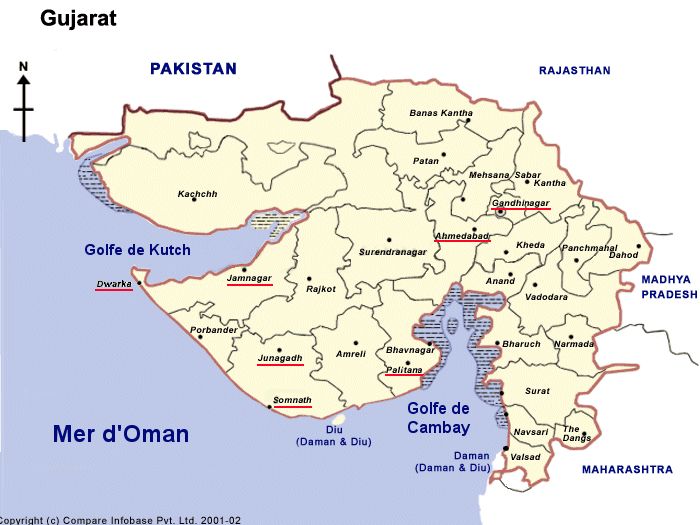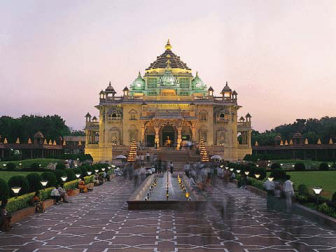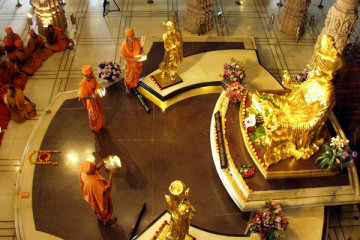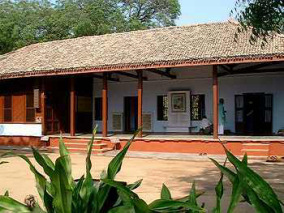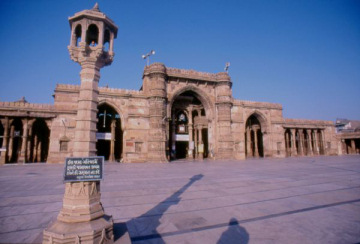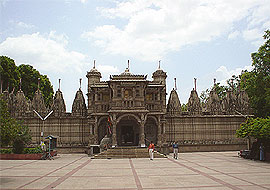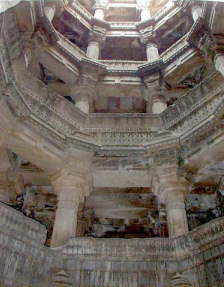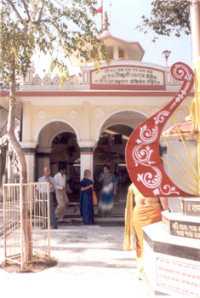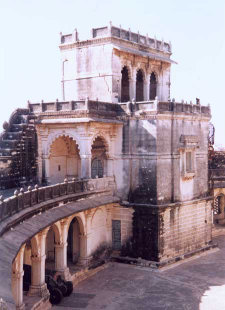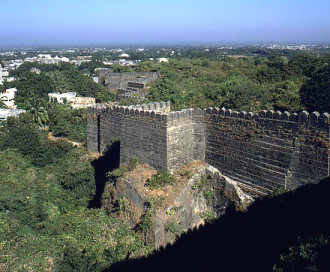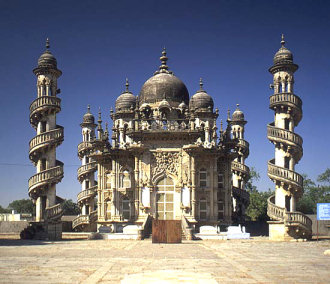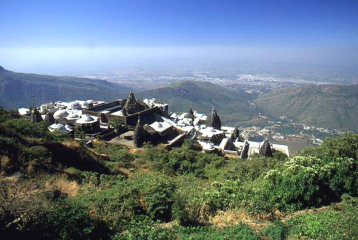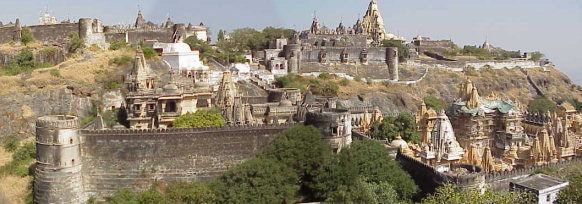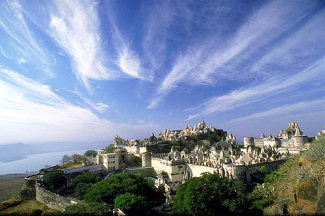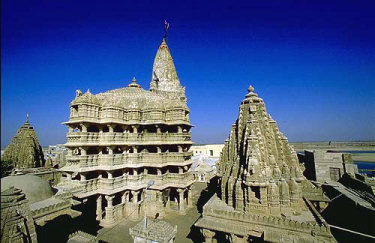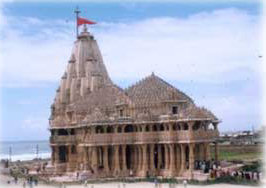The name "Gujarat" comes from Gujjarat, which means Country of the Gujjars. The Gujjars were a tribe who had arrived in India in the fifth century AD.
- Official languages: gujarati and hindi
- Agriculture: rice, maize, peanuts, tobacco and cotton.
- Operations: salt, bauxite, manganese, oil in Vadroda.
- Gujarat is one of the most industrialized Indian states.
History
The history of Gujarat dates back to the period of Indus civilization as several sites dating back to that time were found in Gujarat. The region of Gujarat was part of the Ashoka Empire in the 3rd century BC and then divided into several kingdoms at the end of the Maurya empire. Gujarat reached its apogee in the ninth century and was conquered by the Sultanate of Delhi in the 12th century and remained under the control of Muslim sovereigns until the 18th century. The marathon sovereigns seized it briefly before leaving the region in British hands at the beginning of the 19th century. It was at Surat that the East India Company had set up its first factory in 1612.
At independence in 1947 the region of Gujarat was attached to the state of Bombay. In 1960 two states were created to distinguish regional languages and culture: Gujarat and Maharashtra.
Map of the province of Gujarat
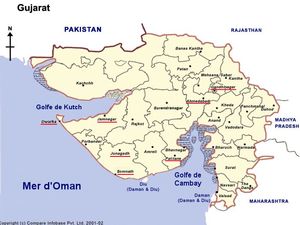
Map of Gujarat
Gandhinagar
Named in honor of Gandhi, this city was built at the creation of the state of Gujarat in 1960 to serve as capital. Part of the plans of the city was inspired by the work that Le Corbusier had accomplished at Chandigarh. Divided into 30 residential districts and leaving the green spaces, the city has done much to fight against pollution. Due to its recent history, the city offers few tourist interests.
The Akshardham
This is the beautiful temple of the Swaminarayan sect. The first stone was laid on December 14, 1979. 33 meters high, it was built in 6 years by faithful volunteers. 6,000 tons of Rajasthan pink sandstone were needed for its construction and no metal was used in the construction. Hundreds of craftsmen took turns to leave the sandstone of magnificent rooms. It is surrounded by lush gardens and beautiful fountains. Inside, visitors can see a gold statue of Swaminarayan and its relics. The place is also presented by the faithful as a cultural center and numerous shows and multimedia exhibitions are presented.
On September 25, 2002, two terrorists managed to penetrate the gardens and attacked the visitors without succeeding in entering the temple itself. The attack killed some 30 people. This attack provoked great emotion in the country.
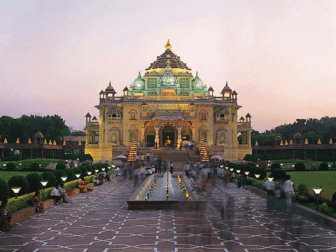
The Akshardham
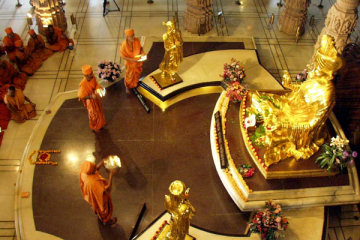
The Akshardham
Ahmedabad
With its 6 million inhabitants it is the largest city in the country. Founded in 1411 by Ahmed Shah, the city fell into the hands of the Mughals in 1572. It then became a commercial center that continued to develop until the death of Mughal Emperor Aurangzeb in 1707. The city then began a slow decline until the British installed a number of textile factories, which earned him the nickname "Manchester of the East". It was in Ahmedabad that Gandhi established his ashram from which he led the struggle for independence.
Today Ahmedabad is one of the most industrialized cities of India but also one of the most polluted. It nevertheless contains many architectural marvels of Hindo-Islamic style.
The Ashram of Gandhi
Gandhi settled in Ahmedabad after returning from South Africa. He founded this ashram in 1918. It made it a place of struggle for independence but also for the right of the untouchables. It is from this place that Gandhi began its salt march in 1930. Today it houses a memorial, a museum and a library. You can see some of Gandhi's personal effects.
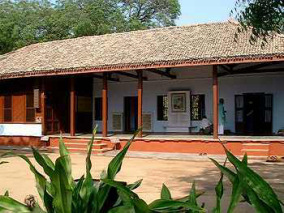
The Ashram of Gandhi
The Jama Masjid
This mosque was erected in 1423 by Ahmed Shah. Mixing the Hindu and Muslim styles, it has 260 pillars that support 3 rows of 5 domes. One enters the mosque by a large arch decorated with carved friezes.
Inside, the faithful find themselves on a large courtyard paved 75 meters by 66 in the center of which is a basin. Near the east entrance are the tombs of Ahmed Shah, his son and his grandson.
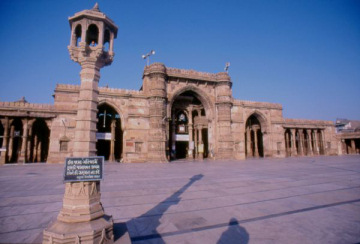
The Jama Masjid
The Bhadra fort
This fortress, built by the Mughals in 1411, owes its name to the goddess Badrakali, whose temple was erected in the fort by the marathas when they occupied the city.
The site now houses administrative offices and is of little interest. To the east you can still admire the Darwaja Teen which is the largest gate of the surrounding wall. It is a triple ark which served as a royal entrance and from which the sovereigns attended the processions between the palace and the Jama Masjid.
The temple of Hathee Singh
It is a Jaïna temple built in 1848 in white marble and dedicated to the fifteenth tirthankara. Like most Jaina temples, it is very richly decorated by magnificent sculptures.
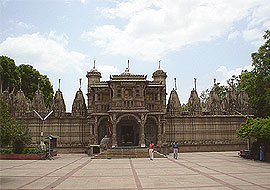
The temple of Hathee Singh
The mosque Sidi Saiyad
This small mosque was built in 1573 by Sidi Saiyad, a slave of Ahmed Shah. It has magnificent carved windows in the shape of a tree.
The dada Hari Wav
It is a baoli (well with galleries) built at the beginning of the 16th century by the favorite of the sultan. These galleries allowed travelers and locals to rest in a refreshing place. The well itself is octagonal in shape and is often dry.
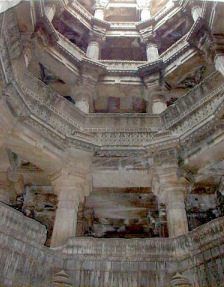
The dada Hari Wav
The Museum of Textiles
Opened in 1949 it houses magnificent fabrics from all over India. Part of the museum is devoted to textiles for religious use, while the other part presents the costumes, carpets, tapestries and tapestries of historical origin. The museum presents the different weaving techniques used throughout India today and in the past. Particular attention is paid to the preservation of exposed textiles.
Jamnagar
Founded in 1540, it was the capital of Jam Jadeta, Nawanagar's sovereign ruler. It was built around Lake Ranmal. The city is known today for its Ayurvedic university, for its pearl cultures and for its bandhinis, fabrics woven in a very particular way. It also has important military installations because of its geostrategic position.
The temple Bala Hanuman
It is in this temple, founded by Bhikshuji Maharaj that one can hear, 24 hours a day, since August 1, 1964, sung invocations intended for the god Rama. This uninterrupted song is written in the Guinness Book of Records. It is at nightfall that the animation around and in the temple is the most important.
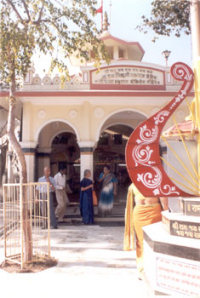
The temple Bala Hanuman
The Lakhota Palace
Located on an island in the middle of the lake this palace was once the Maharaja of Nawanagar. Today it serves as a museum where one can see pieces dating from the 8th to the 18th century, including sculptures. On the same island is found the Bastion Kotha which serves as an arsenal.
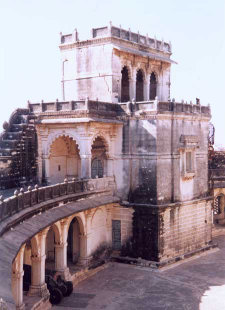
The Lakhota Palace
The Shantinath Mandir and the Adinath Mandir
These two Jain temples are dedicated, as their name suggests, to two of the tirthankaras. Their walls, their columns, their ceilings are colored and decorated in a spectacular way. They are surmounted by brightly colored domes.
Junagadh
Junagadh is an ancient fortified city with ancient history. The city takes its name from the presence of the old fort. The city was built at the foot of the Girnar mountains.
The emperor Ashoka left his mark in the form of edicts carved in the rock in 250 BC Thereafter many dynasties left their mark and the city knew the influence of the four great religions of India : Buddhism, Hinduism, Jainism and Islam. This mixture allowed the construction of a city with a particular architecture.
At Indian independence the Junagadh nabob decided to rally his territory to that of Pakistan, but his isolation and pressure from the predominantly Hindu population prompted the Indian army to intervene and take over the region.
The fort Uperkot
This fortification was built during the reign of Chandragupta in 319 BC Being besieged 16 times without falling, the fort was abandoned in the eighth century and gradually covered by the jungle. Rediscovered and cleared of vegetation the citadel shelters some archaeological curiosities. A triple door leads inside. One can see there the "Nilamtope", an old cannon taken from a Turkish sultan by the nagab of Junagadh; the Jama Masjid, a mosque; Buddhist excavations at least 1500 years old: two beautiful baolis (wells with steps); etc.
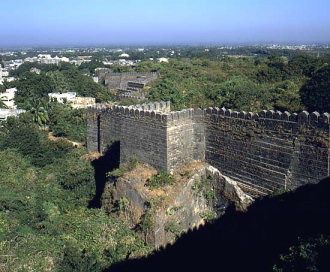
The fort Uperkot
The Mahabat Maqbara
The construction of this extravagant mausoleum began in 1878 under the impulse of the nabab Mahabat Khanji and ended in 1892, under the reign of his successor Bahadur Khanji. It is distinguished by its unique architecture, its silver doors and its minarets surrounded by spiral staircases.
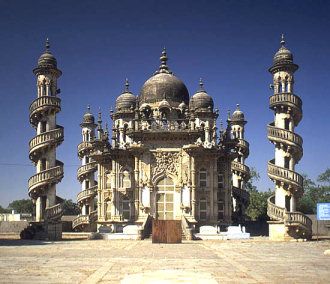
The Mahabat Maqbara
The edicts of Ashoka
They can be seen on a large rock outside the city and sheltered by archaeological authorities. The existence of these inscriptions was reported in 1822 and was seriously studied in 1837. It was then discovered that these were edicts of Ashoka, more than 2000 years old, written in Pali, the common language of the time . Other Sanskrit inscriptions were added later.
The mount Girnar
This hill, which dominates the city, is sacred to the Jains. 16 temples were built between the 12th and 15th centuries. To go to the summit it will be necessary to climb at least 7000 steps, 10000 for the most courageous and for the Jain pilgrims. Sedan chairs are available. This immense staircase was built between 1889 and 1908 with the money of a lottery. The most important temples are the time of Neminath (XIIth century), the temple of Mallinath (XIII) and the temple of Amba Mata.
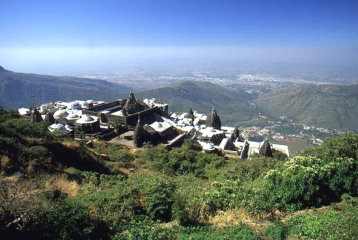
The mount Girnar
Palitana
This small town of 50,000 inhabitants is a Jain pilgrimage center. Tourists and pilgrims only go there for the temples of the Shatrunjaya hill. The city was once the capital of the princely state of the Rajput Gohil clan.
The hill of Shatrunjaya
From the foot of the hill to its summit (603 m above sea level), no less than 863 temples were built. There are two phases of construction: a first between the 11th and 12th centuries and a second in the 16th century after the destruction of many buildings by the Muslims. To reach the top of the hill, there is no other way to climb the 3950 steps of the huge staircase built on the slope. The less courageous or the less healthy can always hire the services of porters.
The temples are grouped into tuks whose religious importance is greater or less according to the divinity to which the tuk is consecrated. The buildings are of varying sizes and interest. The temple Chaumukha (1618) is dedicated to Adinath, the first Tirthankara Jain. This temple is at the top of the collline and is visible by the pilgrims at 40km from Palitana. Located in the tuk Khartavasi it shelters four statues of Adinath, turned towards the four cardinal points. The temple of Adiswara, in the Vimlavasi tuk, is the most richly carved and decorated. One can admire in particular its pillars and marble roofs in which dragons were carved. The temple of Vimalshah and its 5 central domes representing the 5 sacred hills of the jains.
Also on this hill is the tomb of a Muslim saint, Angar Pir. Women wishing to have a child come to collect themselves. At nightfall everyone leaves the summit, including the priests. No soul should remain in temples which are, in the night time, left to the gods.
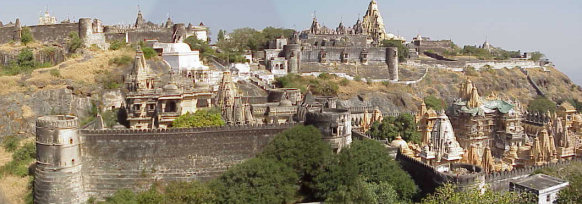
The hill of Shatrunjaya
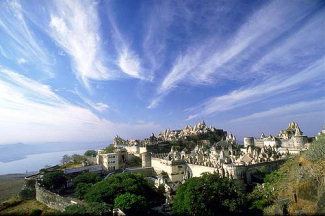
The hill of Shatrunjaya
Dwarka
This city is one of the seven sacred cities of Hinduism. It has always been an important center of pilgrimage because for the Hindus it was here that Krishna built his capital after his departure from Mathura.
The temple of Dwarka
According to the legend it was built in one night by the grandson of Krishna. In fact most of the temple would have been built under the reign of Akbar . Some older parts were dated from the 15th century. The entrance to the temple faces the north. The main body of the temple consists of five floors supported by 60 sculpted columns. Each year, the anniversary of the birth of Krishna is celebrated with pomp.
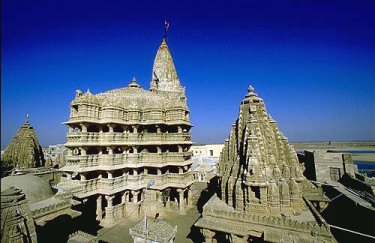
The temple of Dwarka
Somnath
Named after the Deo Pattan, Prabhas Pattan or Pattan Somnath, Somnath has a rich history intimately linked to that of its famous temple.
The temple of Somnath
Very little is known about the construction of the first temple as its history is confused between myth and reality. Legend has it that it was built in gold by the god of the Moon, then silver by Ravana after its destruction, then wooden by Krishna then stone by Bhimdev after a final demolition. The historians leaned for an edification under the reign of the Vallabhi kings in the sixth century. Very soon the temple became an important religious center because it contained one of twelve jyothirlingams (lingam, symbol of Shiva, natural). Many legends were built around this temple, contributing to its wealth and reputation.
It was probably this wealth that attracted Mahmud of Ghazni in 1026. He plundered and destroyed the temple. From then on, the history of the temple was punctuated by the Hindu rebuilding and destruction by the Muslims, especially in 1296, 1375, 1469 and 1706 (under the reign of the terrible Mughal Aurangzeb). Queen Ahilyabai Holkar of Indore rebuilt a temple in 1783 which remained as it was until 1950. The temple then lost its sacred character. S.V. Patel, one of the fathers of the Indian constitution and a great figure in Gujarat, decided to reconstruct it and re-established it as a pilgrimage site, a jyothirlingam having been resettled. It is this seventh temple that can be admired today. The richly decorated entrances, the sculptures of gods and goddesses, give the ensemble great beauty. The Jaïna influence can be detected in the architecture of the place.
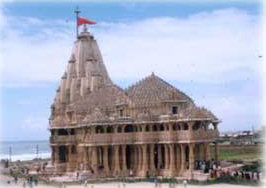
The temple of Somnath
See also:





